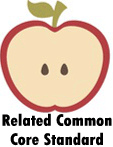What Are Figurative, Connotative, and Technical Word Meanings?
There are several different reasons to write a body of the text. Depending on those reasons, writers use different ways to write words.
Figurative
The figurative meaning of a word does not indicate the actual meaning of it. Sometimes, writers need to use figurative language to intensify the context of a text. The figurative meaning is not used for the actual meaning but rather to give a more dramatic effect to the text. It helps the author in exaggerating the feelings through writing. There are different elements of figurative language. Here are a few examples.
Hyperbole
The term hyperbole refers to the exaggerated meaning of a word that gives a very dramatic effect on the sentence. For example,
"You have got a million things to do. Let us handle this one for you".
Here the word million does not indicate its actual meaning. The person does not have a million things to do. The word million is only used to exaggerate the immense work that the person has to do.
Metaphor
Metaphor is a common element of the figurative language. It is used when you are comparing two different things. For example,
"The girl's cheeks are like a rose". Here a direct comparison between the cheeks and rose have been made.
Personification
Personification is also another element of the figurative language. It is used when you assign human qualities to non-human entities. For example,
"Josh's new game commanded his attention". The game cannot command anything literally but here personification is used to create a dramatic effect.
Connotative Meaning
Sometimes the writer uses connotative meaning to associate positive, negative, or neutral emotions with words. For example, the words childish and youthful have same meanings but they have different connotations. Childish is used as a negative word whereas youthful is used as a positive word.
Technical Meaning
The technical meanings of words are used in specific areas of different fields. These words are used to describe the meanings of specific things.
The Difference Between Figurative, Connotative and Technical Words Meanings
An author does not always need to use words in their literal sense. There are more than meanings to a specific word. Some meanings are based on the context, some on the emotions of the writer, and some on the need of the subject. Based on this, there are mainly three types of words meanings: figurative, connotative, and technical. The description of all these types are as follows:
Figurative Words Meanings
In the figurative use of a word, the writer uses a word to create a dramatic effect in the text. In this type, the words do not convey their literal meaning. Figurative meanings are mostly used in literature to give a dramatic touch to the fictional stories. Some of the common examples of figurative words meanings include personification and similes. Personification is a literary technique in which the writer uses words to give human-like qualities to non-living things. E.g., 'The sun smiled at the couple'. This example shows that the writer has given a human-like trait to the sun and that is the act of smiling. On the other hand, a simile is the figurative use of words to draw a comparison between two things. E.g., 'he is as brave as a lion'. In this example, the writer has compared the bravery of a man to the bravery of a lion.
Connotative Words Meanings
These meanings are based on the personal association of the writer with a word. A connotative meaning is either the negative or the positive use of a word depending upon the emotions of the writer. E.g., in the sentence 'This woman is a dove at heart', the writer has used “dove” for a woman who is peaceful so here the writer has a positive connotation with the word “dove”.
Technical Words Meanings
It is the use of words with technical meanings the writer uses these words to remain confined to a specific field or subject area. These words demonstrate a scientific process, a concept or advancement e.g. Artificial intelligence, Logarithm, etc.

